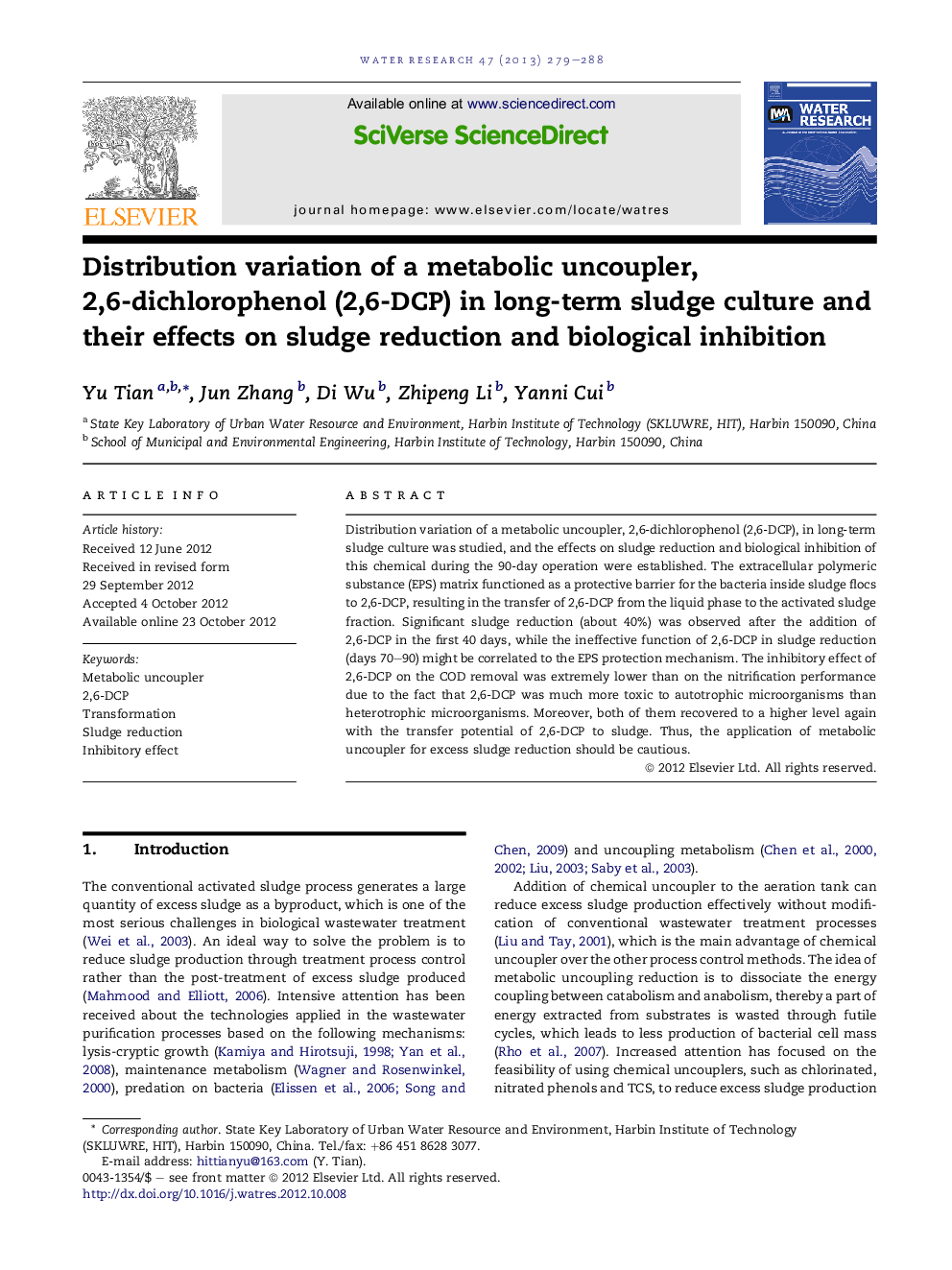| کد مقاله | کد نشریه | سال انتشار | مقاله انگلیسی | نسخه تمام متن |
|---|---|---|---|---|
| 4482538 | 1316862 | 2013 | 10 صفحه PDF | دانلود رایگان |

Distribution variation of a metabolic uncoupler, 2,6-dichlorophenol (2,6-DCP), in long-term sludge culture was studied, and the effects on sludge reduction and biological inhibition of this chemical during the 90-day operation were established. The extracellular polymeric substance (EPS) matrix functioned as a protective barrier for the bacteria inside sludge flocs to 2,6-DCP, resulting in the transfer of 2,6-DCP from the liquid phase to the activated sludge fraction. Significant sludge reduction (about 40%) was observed after the addition of 2,6-DCP in the first 40 days, while the ineffective function of 2,6-DCP in sludge reduction (days 70–90) might be correlated to the EPS protection mechanism. The inhibitory effect of 2,6-DCP on the COD removal was extremely lower than on the nitrification performance due to the fact that 2,6-DCP was much more toxic to autotrophic microorganisms than heterotrophic microorganisms. Moreover, both of them recovered to a higher level again with the transfer potential of 2,6-DCP to sludge. Thus, the application of metabolic uncoupler for excess sludge reduction should be cautious.
Figure optionsDownload high-quality image (200 K)Download as PowerPoint slideHighlights
► Sludge reduction and biological inhibition of 2,6-DCP are widely linked to its transformation behavior.
► EPS functions as protective barrier for sludge bacteria to 2,6-DCP to transfer from liquid to sludge.
► Significant sludge reduction (about 40%) was observed in the first addition of 2,6-DCP for 40 days.
► The ineffective function of 2,6-DCP in sludge reduction was found in long-term operation.
► 2,6-DCP was much more toxic to autotrophic microorganisms than heterotrophic microorganisms.
Journal: Water Research - Volume 47, Issue 1, 1 January 2013, Pages 279–288